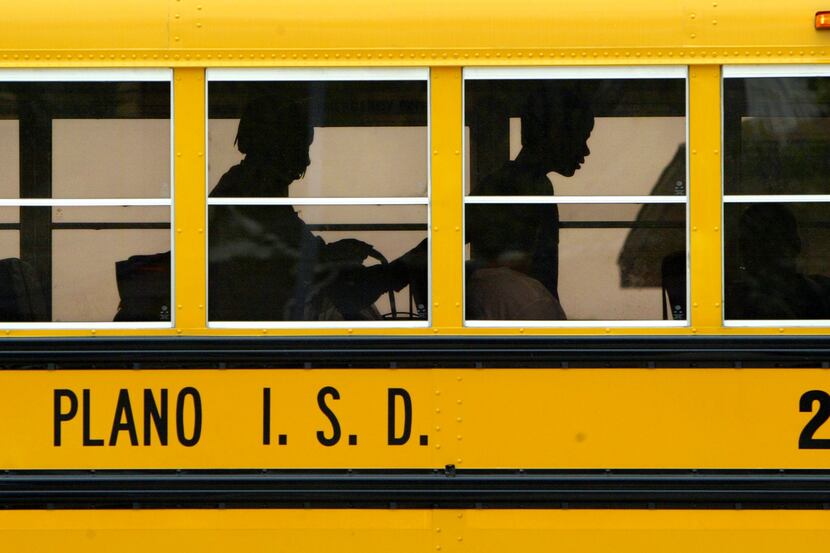As summer wears on and coronavirus cases keep rising in North Texas, parents will soon have to make the difficult decision of whether to send their children back to school or continue with online learning.
Gov. Greg Abbott announced in June that students could return to campuses in the fall, and the Texas Education Agency released guidelines for how to safely conduct in-person courses in the coming year. The recommendations include requiring a COVID-19 screening for all students, teachers and visitors, providing hand sanitizer at every entrance, and cleaning classrooms more often.
The TEA is allowing parents to choose online or in-person learning at any time during the school year.
But online learning has put a strain on families, and for many of them, it may not be possible. Still, as coronavirus cases continue to rise, parents are wondering whether it’s worth the risk to return to school.
We spoke with three Texas health experts about whether they would send their kids back into classrooms. Here’s what you need to know.
Would you send your kids back to school this fall?
Dr. Catherine Troisi is an infectious disease epidemiologist at UTHealth School of Public Health in Houston. Although she doesn’t have children who are young enough to send to school, she does have a granddaughter who lives in Virginia.
Troisi said the decision to return to the classroom depends on how the outbreak has affected a community, what precautions its schools are taking and how the disease would affect other family members who may have health problems.
“In my case with my granddaughter, who is in Virginia, who does not have any medical conditions and neither does her family, yeah, I would probably send her to school,” she said.
But Dr. Rajesh Nandy, a statistician at the University of North Texas Health Science Center at Fort Worth, said that if he had to decide based on today’s data, he wouldn’t send his third-grader to school.
What Nandy is looking at is the basic reproduction rate, or how many new infections will be created from one infected person. If the number is above one, that means the rate of infection is growing. If it’s below one, it’s declining. The current basic reproduction rate is 1.4 and rising.
“I’m not comfortable sending my kid to school right now because the rate is still above one — maybe not too much above one, but it’s still level one, which means that it’s still growing,” he said.
What would schools need to do for you to feel comfortable sending kids back?
Dr. Philip Huang, Dallas County’s public health director, said the precautions that would make him feel most comfortable would include screening children and faculty members before they enter the school, strictly enforcing physical distancing, avoiding mixing classes and minimizing class sizes.
“This has been such a changing thing; everything changes from one day to another,” he said. “The longer that some decisions can be delayed until you really get all of the information in place,” the better.
Troisi said that if she were to send a child to school, she would want to see that students are spaced out at their desks and at recess. She also recommended that schools have a regular disinfecting schedule and that they install shields to prevent the transmission of illness through coughing or sneezing.
Troisi said she also wants the case numbers to decline to feel better about returning kids to school.
“I want to see that they’re decreasing, not going the wrong way,” she said. “I’d want to see that we had enough testing and that the testing positivity rate was less than 10%.”
Should my child wear a mask to school?
“The mask issue is a hard one,” Troisi said — not because it isn’t safe to wear a mask but because it may be hard to get children to wear them safely.
Troisi suggests having classes with fewer kids to limit contact among students.
Nandy said that if people are going to be inside together, masks are necessities.
“There is clear evidence that a mask is the simplest, the least expensive and possibly the most effective way to control the transmission of that disease, other than essentially confining yourselves at home,” he said.
What about older kids? Is there a difference in risk depending on age?
With illnesses such as the flu, children typically play a significant role in spreading diseases, health experts have said. But because schools closed so quickly, it’s unclear what role children play in the spread of COVID-19.
Troisi pointed out that unless they have an underlying medical problem, kids are much less likely to get severely ill or die from the infection.
“What about your 65-year-old teacher who has cancer? What about the grandma who’s living in the house with this young kid?” she said. “That’s the risk we’re looking at here. I mean, it’s a much higher risk than a risk to the actual child.”
The main fear is that children will get mild forms of the disease, or be asymptomatic, and spread the illness to older, at-risk family members. It’s especially concerning to some that children may not follow social distancing and mask mandates as closely as older people.
“I can see older kids where perhaps some of the compliance with universal masking, physical distancing, may be more under control potentially,” Huang said, adding that he thinks parents should be cautious with all children because of the high level of community spread in Dallas County.
Nandy agreed that community spread would be a major concern and urged families to follow Texas Education Agency guidelines such as keeping students home if there is an older adult living in the house.
What do you recommend parents do?
Huang suggested parents take a cautious approach and enroll their children in online learning if possible, at least for the first part of the school year.
“I think that distance learning is the safest thing,” he said. “[Until] we see how the response is now with some of the things now that are put in place, with the universal facial covering and masking, and see if we can slow down the community spread that we’ve been seeing since Memorial Day.”
Nandy and Troisi said parents should keep track of the data and use it to assess the risk for their families.
“There is no scenario that there is zero risk until we actually have a vaccine,” Nandy said. “The risk is never zero, but the question is that is it worth taking the risk, or if it’s considering taking the risk. We need to see clear evidence that the virus has declined, even if it’s a really slow decline.”


